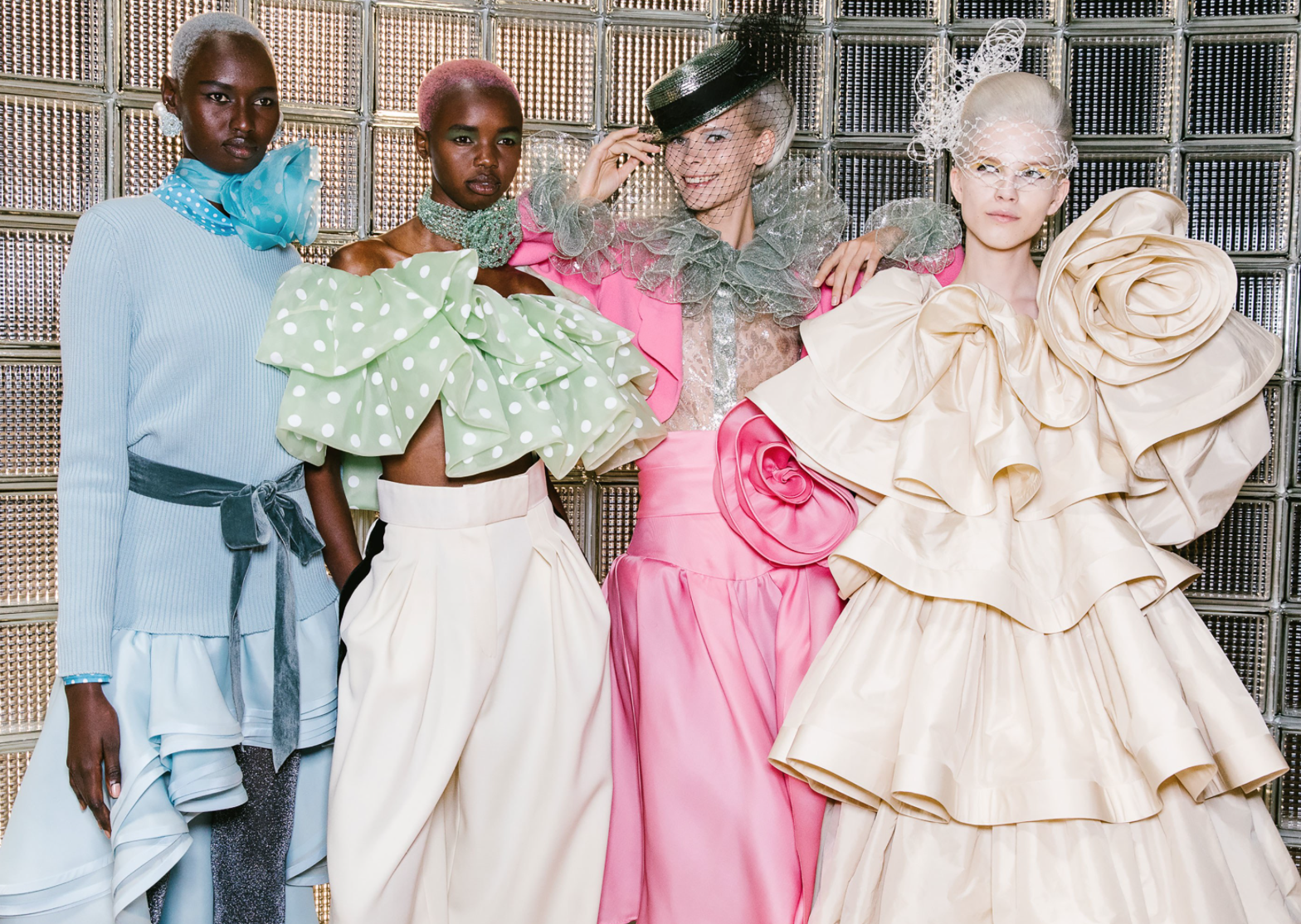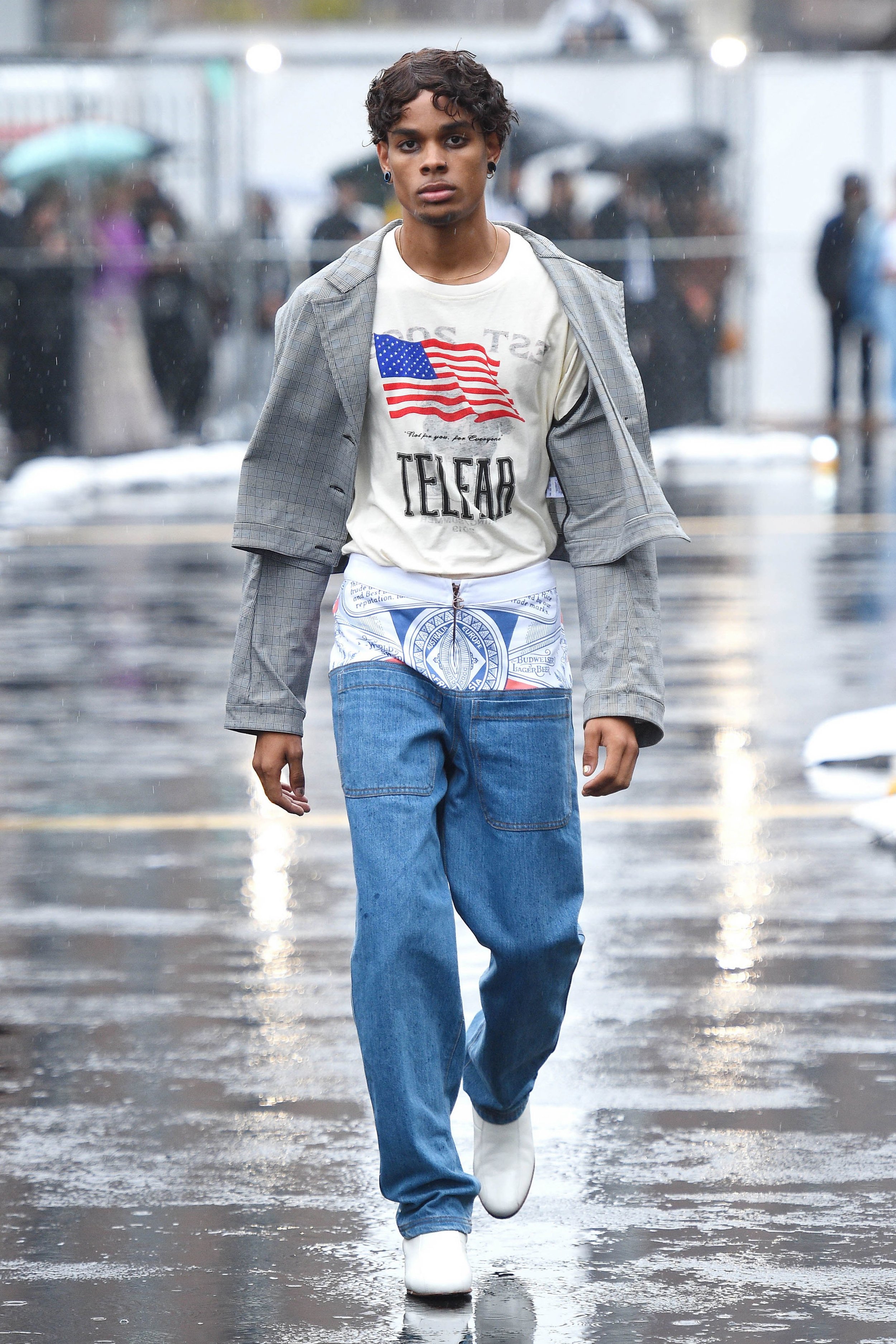New York Fashion Week: SS19
Prior to Fran Summers’ first strides onto the Tom Ford catwalk officially inaugurating the NYFW festivities, expectations for the week ahead in the American fashion capital were great. Ralph Lauren’s 50th anniversary, Wes Gordon’s creative director debut at Carolina Herrera and the return of Proenza Schouler and Rodarte to the New York show calendar provided particular excitement. Each highly anticipated celebration held every intention of stifling any doubts regarding New York’s relevance on the global fashion scene - doubts, which over the past several seasons have grown exponentially. And so, expectations were exceeded starting with a touching tribute to the father of American sportswear; the originator of what it means to be a lifestyle brand.
With front row guests including Oprah and Hilary Clinton, Kanye West and Robert De Niro as well as the full roster of New York’s most established fashion trailblazers, Ralph Lauren’s 50th Anniversary, a monumental occasion in American (fashion) history, was alight in full force.In a see now buy now collection of well over 100 looks, it captured American elegance - the perfected balance between comfort and aspiration; homey flannels met velvet patchworks, a worn leather bomber jacket covering a cosy sweatshirt. An Annie Hall styled ruffled white blouse synched together with a bow tie and paired with brown leather trousers reiterated an approachable yet luxe aesthetic which has been deeply woven into American DNA.
It was the Polo Ralph Lauren looks which were particularly touching as models (some hand in hand with their own children) paid tribute to the modern American family. Many wore varsity jackets, preppy polo shirts, tweed blazers and of course those teddy bear sweaters. Ralph Lauren represents the American dream- built on hard work, integrity, a pioneering spirit; a lifestyle of grit and grace.Building onto the legacy of another American dream is 31 year old Wes Gordon who has taken the reins at Carolina Herrera. Gordon’s vision for the brand was to prioritise Cartagena over Carnegie Hall, shaking up its uptown design codes for a more youthful demographic. Although the occasion-wear outnumbered and outshone the daywear the result was a happy, playful yet polished collection, bustling with sweet summer soaked colour and optimistic prints.
Perhaps as a backlash to dark current events, it was this bright positive energy which radiated here and throughout a multitude of collections.Prabal Gurung sparked joy through a vibrant palate inspired from indigenous villages in Nepal and featured models from more than 35 countries, thus celebrating diversity and inclusion. Bright tantalising colour also delighted at Brandon Maxwell who dedicated the collection to his native Texas and the dripping wealth of the Lone Star state during the 1980s oil boom. The 1980s continue to take the fashion world by storm not only through loud artificial hues, but though exaggerated silhouettes best seen at Marc Jacobs.Jacobs extended his couture-esque collection from last season, touching again upon vintage Mugler, Saint Laurent, early Lagerfeld for Chanel, to our delight. It was a much needed counter argument to streetstyle, war core, and lazy “ugly” fashion which has taken over the mainstream market. It was provocative in its pompousness, fierce in its femininity. No athleisure, no track suits, no logos.
Jacobs made the case of anti- “woke up like this” and pro - “respect for life so I’m going to look as fabulous as I possibly can”. Despite starting one and a half hours late (many editors left to catch their flights to London) it was in my opinion the highlight of New York proving the couture factor is also present on the other side of the pond. The case for pretty clothes was also on display at Oscar de la Renta where after four seasons Laura Kim and Fernando Garcia have finally found their groove. They revamped the house vocabulary for a new audience - e.g rapper Nicky Minaj was sat front row - and weaved the ease of island breeze into traditional forms such as skirtsuits and flared dresses. The collection sparked a sense of resort and wanderlust, also featured at Tory Burch who was inspired by her parents’ travels around the Mediterranean.However with all the prettiness blossoming in New York- the ultra-pretty prairie dress is the must have item of the season in case you were asking - it is a tale of two cities.
On one hand you have beautiful, refined, meticulously crafted design- on the other, including brands such as Telfar, Vaquera and Eckhaus Latta, you have blunt smack in the face realism with a DIY aesthetic. These three brandsrepresent a new generation in fashion; raw, rough and real. While the labels are embraced by the media and art worlds - Eckhaus Latta is currently the subject of an exhibition at the Whitney Museum of American Art - I for one question if in the case of Telfar, Budweiser motif t-shirts are truly remarkable? If in the case of Vaquera, a plain hoodie is really breaking ground?
“Ugly” fashion’s root within reality is at best mundane and at worst messy and unappealing. I fail to understand both the romantic notion of greater meaning or the commercial scalability. Of course meaningin a collection doesn’t have to tug at the heart strings or lead to Nirvana each season but a collection deserves to be well crafted and of lasting value (hello, sustainability?). In terms of function and substance, I fear many of the new hip and happening brands do not possess these qualities (yet). Without these qualities who’s anniversary will we be celebrating in 50 years time?
Like so much of (not only) American society, the New York collections were polarising. It was a tale of the haves - Lauren, Jacobs, Kors, Herrera - versus the have nots, young emerging labels struggling, like all of us, to navigate what the future of fashion holds. Overarching trends can be said to have disappeared completely and it is instead individual labels catering to individual audiences, with individual tastes, communicating to them through individual devices. Fashion has been fractured, split into diverse niches which is why a collective fashion week formula simply no longer makes sense… thoughts for another day.







